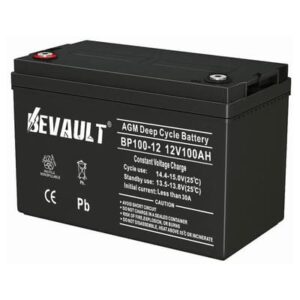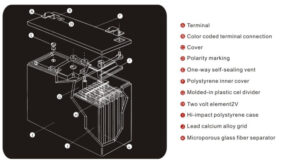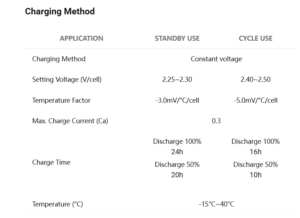Is it Safe to Use VRLA Batteries (VRLA battery) Upside-down?
In my work with battery installations, this question comes up often, especially in tight spaces where mounting options are limited. The answer isn't as straightforward as you might think.
While VRLA batteries, particularly AGM types, are designed to be position-flexible, it's not recommended to mount them upside-down. Though the electrolyte is absorbed, there's still some free acid that could leak or affect performance.

Let me share what I've learned about battery positioning through years of installation experience.
What Happens if a Battery is Upside Down?
I've seen the consequences of improper battery positioning firsthand, and it's important to understand the risks.
When a battery is placed upside down, even with VRLA design, internal components can shift and free electrolyte might leak through the safety valves. This can reduce performance and potentially create safety hazards.

Here's my detailed analysis of the effects:
Impact on Battery Components
-
Internal Structure
- Plate displacement
- Electrolyte distribution
- Valve operation
- Gas collection
- Pressure regulation
-
Performance Effects
- Charging efficiency
- Capacity utilization
- Internal resistance
- Temperature distribution
- Life expectancy
-
Safety Considerations
- Acid containment
- Gas venting
- Pressure management
- Terminal stress
- Structural integrity
What are the Safety Requirements for VRLA Batteries?
Throughout my career in battery installation and maintenance, I've learned that proper safety protocols are crucial.
VRLA batteries require proper ventilation, temperature control, secure mounting, appropriate spacing, and protection from physical damage. They should be installed in accordance with manufacturer guidelines and local safety codes.

Let me outline the key safety requirements:
Essential Safety Protocols
-
Installation Requirements
- Ventilation systems
- Temperature monitoring
- Mounting security
- Spacing guidelines
- Access restrictions
-
Environmental Controls
- Temperature limits
- Humidity management
- Air flow requirements
- Dust protection
- Chemical exposure prevention
-
Maintenance Procedures
- Regular inspections
- Connection checks
- Cleaning protocols
- Performance monitoring
- Emergency procedures
Can Sealed Lead-Acid Batteries be Used Upside Down?
This question often comes up when discussing flexible installation options for sealed batteries.
While sealed lead-acid batteries are more position-flexible than flooded types, they should ideally not be used upside down. Side mounting at angles up to 90 degrees is generally acceptable for most VRLA designs.

Here's my comprehensive explanation based on years of experience:
Position Flexibility Guidelines
-
Mounting Options
- Vertical orientation
- Side mounting
- Angle limitations
- Support requirements
- Installation constraints
-
Design Considerations
- Internal construction
- Electrolyte management
- Pressure regulation
- Terminal positioning
- Vent operation
-
Performance Impacts
- Charging efficiency
- Heat distribution
- Gas management
- Acid stratification
- Long-term reliability
Do Lead-Acid Batteries Have to be Upright?
From my extensive work with various battery types, this is an important distinction between different lead-acid technologies.
Traditional flooded lead-acid batteries must be kept upright, but VRLA batteries offer more mounting flexibility. However, even with VRLA batteries, upright or side mounting is preferred over inverted positions.

Let me explain the key differences:
Battery Type Positioning Requirements
-
Flooded Lead-Acid
- Strict upright position
- No angle tolerance
- Spillage risk
- Maintenance access
- Ventilation needs
-
VRLA/AGM Design
- Flexible mounting
- Angle limitations
- Internal safeguards
- Performance optimization
- Installation considerations
-
Installation Best Practices
- Manufacturer guidelines
- Safety regulations
- Performance optimization
- Maintenance access
- Environmental factors
Position Impact Analysis
-
Operating Efficiency
- Charge acceptance
- Discharge performance
- Internal resistance
- Heat management
- Life expectancy
-
Safety Considerations
- Acid containment
- Gas management
- Structural integrity
- Terminal stress
- Emergency response
Conclusion
While VRLA batteries offer more mounting flexibility than traditional batteries, upright or side mounting is still recommended for optimal performance and safety. Avoid upside-down installation to prevent potential issues with acid distribution and valve operation.